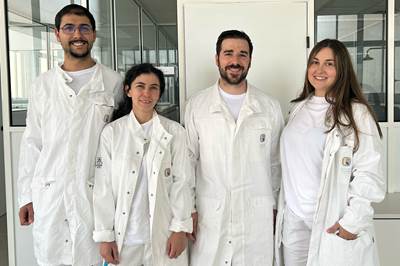UV curing systems save composites curing time, energy
CAMX 2024: IST America presents a comprehensive selection of UV, IR and hot air technologies, designed to deliver results in less than a minute.
Share
Known for its global design and construction of UV and LED technology, IST America (Shorewood, Ill., U.S.), part of the IST Metz Group, is sharing innovations in its light curing platforms for polymer matrices in composite component production. IST says that the state-of-the-art advancements save significant time and energy while maintaining high quality.
UV curing is a versatile solution for various production processes, including wet layup techniques, vacuum infusion with UV-transparent membranes, filament winding, prepreg processes and continuous flat processes. Unlike traditional thermal curing methods, IST America points out, UV curing delivers optimal results in less than a minute as opposed to hours, cutting cycle time and energy consumption. This also amplifies an industrial process’ sustainability benefits, as it requires only one tool, thus reducing carbon footprint.
A standout benefits of UV formulations is their styrene-free composition. The 1K solutions feature an extended pot life of several months, eliminating the need for complex storage. Additionally, they contain no volatile organic compounds (VOCs), making them environmentally friendly and compliant with strict regulations.
IST America ensures optimal curing results by leveraging various radiation sources and light profiles tailored to specific applications and curing strategies. While the thickness of laminates is limited to approximately one inch for efficient UV application, multi-ayer buildups can be considered, expanding the possibilities for composite designs and providing an alternative for structural composites.
The market offers formulations that facilitate the curing of fiberglass and carbon fiber. These advancements are said to be enhanced by IST America’s expertise in designing and installing customized light sources.
Related Content
-
Plant tour: Joby Aviation, Marina, Calif., U.S.
As the advanced air mobility market begins to take shape, market leader Joby Aviation works to industrialize composites manufacturing for its first-generation, composites-intensive, all-electric air taxi.
-
Large-format 3D printing enables toolless, rapid production for AUVs
Dive Technologies started by 3D printing prototypes of its composite autonomous underwater vehicles, but AM became the solution for customizable, toolless production.
-
Plant tour: Albany Engineered Composites, Rochester, N.H., U.S.
Efficient, high-quality, well-controlled composites manufacturing at volume is the mantra for this 3D weaving specialist.
Related Content
Plant tour: Joby Aviation, Marina, Calif., U.S.
As the advanced air mobility market begins to take shape, market leader Joby Aviation works to industrialize composites manufacturing for its first-generation, composites-intensive, all-electric air taxi.
Read MoreLarge-format 3D printing enables toolless, rapid production for AUVs
Dive Technologies started by 3D printing prototypes of its composite autonomous underwater vehicles, but AM became the solution for customizable, toolless production.
Read MorePlant tour: Albany Engineered Composites, Rochester, N.H., U.S.
Efficient, high-quality, well-controlled composites manufacturing at volume is the mantra for this 3D weaving specialist.
Read MoreCombining multifunctional thermoplastic composites, additive manufacturing for next-gen airframe structures
The DOMMINIO project combines AFP with 3D printed gyroid cores, embedded SHM sensors and smart materials for induction-driven disassembly of parts at end of life.
Read MoreRead Next
EUVAM project investigates energy-efficient UV process for composites curing
University of Stuttgart researchers intend to develop flexible, highly productive and digitally controllable manufacturing approach for small urban vehicle production.
Read MoreKeyland Polymer opens UV-cured solid resin R&D lab in Spain
The new state-of-the-art facility in Barcelona is staffed to grow Keyland’s UV resin R&D, production and sales used in inks, AM, composite powder coatings and other products.
Read MoreDeveloping bonded composite repair for ships, offshore units
Bureau Veritas and industry partners issue guidelines and pave the way for certification via StrengthBond Offshore project.
Read More













